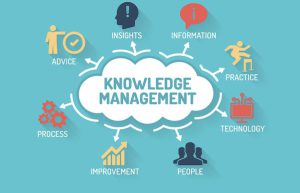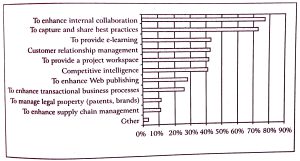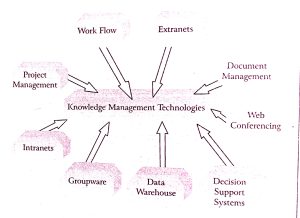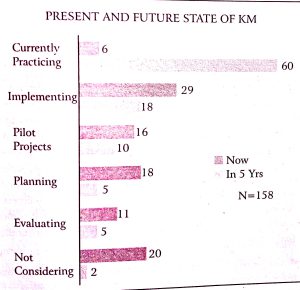BCA 3rd Year Concept of Knowledge Management Notes Study Material
Chapter Wise BCA 3rd Year Concept of Knowledge Management Notes Study Material: If you choose to do a Bachelor of Computer Application, it is BCA. BCA is a three-year program in most universities. After getting enrolled for BCA, There are certain things you require the most to get better grades/marks in BCA. Out of those, there are BCA Notes and BCA Semester Wise Study Material. BCA Question Answers along with BCA Previous Year Papers. At gurujistudy.com you can easily get all these study materials and notes for free.
If you are a BCA Student there is a single-stop destination as far as preparation for BCA Examination is concerned. Here in this post, we are happy to provide you with Topic Wise & Chapter Wise BCA 3rd Year Concept of Knowledge Management Notes Study Material.

BCA 3rd Year Concept of Knowledge Management Notes Study Material
Introduction
Knowledge Management is one of the hottest topics today in both the industry world and information research world. In our daily life, we deal with huge amount of data and information. Data and information is not knowledge until we know how to dig the value out of it. This is the reason we need knowledge management. Unfortunately, there’s no universal definition of knowledge management, just as there’s no agreement as to what constitutes knowledge in the first place. We chose the following definition for knowledge management for its simplicity and broad context.
I. Simple Definition
Knowledge Management (KM) refers to a multi-disciplined approach to achieving organizational objectives by making the best use of knowledge. Knowledge Management focuses on processes such as acquiring, creating and sharing knowledge and the cultural and technical foundations that support them.
II. Knowledge Management in Different Terms
People: How do you increase the ability of an individual in the organisation to influence others with their knowledge.
Processes: Its approach varies from organization to organization. There is no limit on the number of processes.
Technology: It needs to be chosen only after all the requirements of a knowledge management initiative have been established.
OR
Culture: The biggest enabler of successful knowledge-driven organizations is the establishment of a knowledge-focused culture.
Structure: The business processes and organisational structures that facilitate knowledge sharing.
Technology: A crucial enabler rather than the solution.
Relation of knowledge Management with Different Disciplines and Technologies
Knowledge management draws from a wide range of disciplines and technologies given below:
- Cognitive science.
- Expert systems, artificial intelligence and Knowledge Base Management Systems (KBMS).
- Computer-supported collaborative work (groupware).
- Library and information science.
- Technical writing.
- Document management.
- Decision support systems.
- Semantic networks.
- Relational and object databases.
- Simulation.
- Organizational science.
- Object-oriented information modeling.
- Electronic publishing technology, hypertext, and the world wide web (www): help-desk technology.
- Full-text search and retrieval.
- Performance support systems.
The History of Knowledge Management
I. 70’s
A number of management theorists have contributed to the evolution of knowledge management can be given as-
- Peter Drucker: Information and knowledge as organizational resources.
- Peter Senge: “Learning organization”.
- Leonard-Barton: Well-known case study of “Chaparral Steel “, a company having knowledge management strategy.
II. 80’s
- Knowledge (and its expression in professional competence) as a competitive asset was apparent.
- Managing knowledge that relied on work done in artificial intelligence and expert systems.
- Knowledge management-related articles began appearing in journals and books.
III. 90’s Until Now
- A number of management consulting firms had begun in-house knowledge management programs.
- Knowledge management was introduced in the popular press, the most widely read work to date is Ikujiro Nonaka’s and Hirotaka Takeuchi’s. The knowledge-creating company: How Japanese companies create the dynamics of innovation (1995).
- The International Knowledge Management Network (IKMN) went online in 1994.
- Knowledge management has become big business for such major international consulting firms as Ernst & Young, Arthur Andersen, and Booz-Allen & Hamilton.
The Value of Knowledge Management
Some benefits of KM correlate directly to bottom-line savings, while others are more difficult to quantify. In today’s information-driven economy, companies uncover the most opportunities — and ultimately derive the most value-from intellectual rather than physical assets. To get the most value from a company’s intellectual assets, KM practitioners maintain that knowledge must be shared and serve as the foundation for collaboration. Yet better collaboration is not an end in itself; without an overarching business context, KM is meaningless at best and harmful at worst. Consequently, an effective KM program should help a company do one or more of the following:
- Foster innovation by encouraging the free flow of ideas.
- Improve decision making.
- Improve customer service by streamlining response time.
- Boost revenues by getting products and services to market faster.
- Enhance employee retention rates by recognizing the value of employees knowledge and rewarding them for it.
- Streamline operations and reduce costs by eliminating redundant or unnecessary processes.
These are the most prevalent examples. A creative approach to KM can result in improved efficiency, higher productivity and increased revenues in practically any business function.
Knowledge Management Today
According to a recent IDC report, knowledge management is in a state of high growth, especially among the business and legal services industries. As the performance metrics of early adopters are documenting the substantial benefits of knowledge management, more organizations are recognizing the value of leveraging organizational knowledge. As a result, knowledge management consulting services and technologies are in high demand, and knowledge management software is rapidly evolving.
I. Knowledge Management Drivers
The main drivers behind knowledge management efforts are:
- Knowledge attrition: Despite the economic slowdown, voluntary employee turnover remains high. A recent survey by the global consulting firm Drake Beam Morin revealed an average voluntary employee turnover rate of 20 percent with 81 percent of organizations citing employee turnover as a critical issue. Estimated annual costs of employee turnover was a staggering $129 million per organization.
- Knowledge merging: Since 1980, the annual value of mergers has risen 100 fold reaching a cumulative $15 trillion in 1999. Over 32,000 deals were announced, triple the number of 10 years earlier and more than 30 times as many as in 1981. The recent frenzy of corporate mergers coupled with the increased need to integrate global corporate communications requires the merging of disparate and often conflicting knowledge models.
- Content management: The explosion of digitally stored business-critical data is widely documented. Forester Research estimates that online storage for Global 2,500 companies will grow from an average of 15,000 gigabytes per company 1999 to 153,000 gigabytes by 2003, representing a compound annual growth rate of 78%. As the volume of digital information expands, the need for its logical organization is critical for purposes of information retrieval, sharing and reuse.
- E-Learning: As the economy becomes more global and the use of PCs more pervasive, there has been a dramatic increase in e-learning, also known as computer based training. E-learning is closely linked to and overlapping with, but not equal to knowledge management. E-learning can be an effective medium for knowledge management deliverables.
Knowledge Management Today
II. KM Objectives
The graph below shows the results of a recent IDC study in which corporations cited various objectives for knowledge management efforts:

Activities related to these objectives include: creating knowledge sharing networks that facilitate a corporate knowledge culture, developing knowledge leaders, optimizing intellectual capital by producing knowledge management solutions such as codification strategies and knowledge bases, and estimating revenue and efficiency gains resulting from knowledge management in terms of return on investment (ROI).
III. KM ROI (Return on Investment)
Although 65% of organizations that are currently implementing KM initiatives have not measured the impact of their performance, large revenue gains and efficiency improvements have been recorded by numerous major corporations. For instance: Ford Motor Company accelerated its concept-to-production time from 36 months to 24 months. The flow on value of this has been estimated at US $1.25 billion, The Dow Chemical Company saved $40 million a year in the re-use of patents, Chase Manhattan, one of the largest banks in the US, used Customer relationship management KM initiatives to increase its annual revenue by 15%, and Pfizer credits KM practices for discovering the hidden benefits of the Viagra drug.
Knowledge Management Today
IV. Technologies that Support Knowledge Management
The following diagram reflects the main technologies that currently support knowledge management systems.

These technologies roughly correlate to four main stages of the KM life cycle:
- Knowledge is acquired or captured using intranets, extranets, groupware, web conferencing, and document management systems.
- An organizational memory is formed by refining, organizing, and storing knowledge using structured repositories such as data warehouses.
- Knowledge is distributed through education, training programs, automated knowledge based systems, expert networks.
- Knowledge is Applied or leveraged for further learning and innovation via mining of the organizational memory and the application of expert systems such as decision support systems.
All of these stages are enhanced by effective workflow and project management.
Knowledge Management Today
V. Present and Future State of KM
Currently, communities of practice such as the Knowledge Management Network and the development of standards and best practices are in a mature stage of development. KM curricula such as certification, corporate training and university graduate certificate programs are on the rise. Techniques such as data mining and text mining that use KM for competitive intelligence and innovation are in the early stages of development. Finally, organizations are investing heavily in ad hoc KM software that facilitates organizational knowledge. The chart below estimates the state of their current and future KM activities.

The Future of Knowledge Management
In the next several years ad-hoc software will develop into comprehensive, knowledge aware enterprise management systems. KM and E-learning will converge into knowledge collaboration portals that will efficiently transfer knowledge in an interdisciplinary and cross functional environment. Information systems will evolve into artificial intelligence systems that use intelligent agents to customize and filter relevant information.
The Effect of Knowledge Management on Databases
Multiple corporate databases will merge into large, integrated, multidimensional knowledge bases that are designed to support competitive intelligence and organizational memory. These centralized knowledge repositories will optimize information collection. organization, and retrieval. They will offer knowledge enriching features that support the seamless interoperability and flow of information and knowledge. These features may include: the incorporation of video and audio clips, links to external authoritative sources, content qualifiers in the form of source or reference metadata, and annotation capabilities to capture tacit knowledge. Content will be in the form of small reusable learning objects and associated metadata that provides contextual information to assist KM reasoning and delivery systems.
The Implications of Knowledge Management
I. Database users: From business class users to the general public, database users will enjoy a new level of interaction with the KM system including just-in-time knowledge that delivers precise relevant information on demand and in context. More complex, smart systems will translate to optimal usability and less time spent searching for relevant information. For example, data analysts will enjoy simplified access and more powerful tools for data exploitation. The use of knowledge bases can reduce customer service costs by providing customers with easy access to 24/7 self service via smart systems that reduce the need to contact customer service or technical support staff. Database users may even create customized views of knowledge bases that support their needs.
The Implications of Knowledge Management
II. Database developers: The design and development of knowledge based systems will be considerably more complex than current database development methods. Developers must consider the overall technical architecture of the corporation ensure seamless interoperability. The use of standardized metadata and methods will also facilitate both intra-corporate and inter-corporate interoperability. Making effective physical storage and platform choices will be equally complex. Both knowledge base developers and administrators must understand the role of the knowledge base in the overall KM system.
III. Database administrators: Database Administrators will evolve into Knowledge Managers. The knowledge base will store and maintain corporate memory and Knowledge Managers will become the gatekeepers of corporate knowledge. The lines between technical roles such as Web Developer, Data Analyst or Systems Administrator will blur as these systems merge into and overlap with KM systems. DBAs will need to have some knowledge about each of these disciplines.
IV. General public: Even if they are not interacting directly with a knowledge base, the general public will benefit from the secondary effects of improved customer service due to faster access to more accurate information by service providers.
Elements of Knowledge Management
It is important that organizations transform their structure and processes to become learning organizations leveraging Knowledge Management. Some insights into the Knowledge Management elements, as provided by Marquardt (1996):
- Collaboration: People should be able to use the social media, the internet and internal systems and encouraged to collate data and share with their peers and teams.
- Expertise and access to experts: Job rotations, cross- functional projects etc. facilitates transferring of knowledge across boundaries and also in enhancing the knowledge and expertise.
- Communities of practice: This forum helps in posting issues, solving problems and discussing key topics. People who share common interest in an area of competence and are willing to share their experiences come together to form a community of practice.
- Real-time information: The key concept of knowledge management is to provide information to the right people, in the right format and in the right period of time. Providing systems that people can readily access for information helps in this.
- Knowledge of organization depth and scope: Having volumes of data is not useful unless it is coded and stored in a manner that makes sense to the people and which is easy to retrieve. Determining what to capture, how to capture, formatting to help people to analyse and make decisions is important.
- Personalization and navigation of the system and interface: For people who are not computer savvy, it is difficult to understand the importance of collating data, entering it in a centralized system. Having a system which is easy to use, retrieve data and also enter data helps in leveraging knowledge to the maximum.
- Difference between instruction and information: Data which has a meaning is information.
BCA Concept of Knowledge Management Notes Study Material